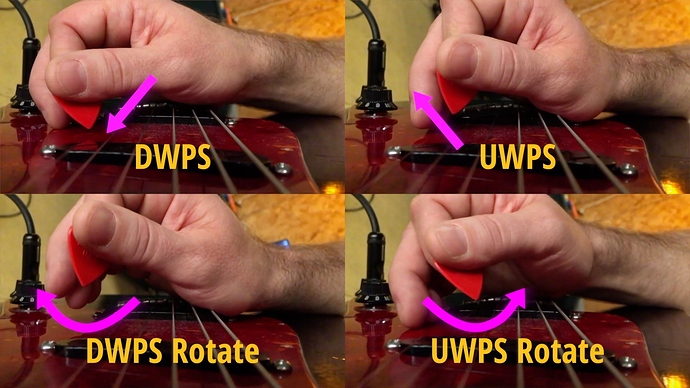I hate to beat this dead horse, but I’m not sure what you mean by “2wps”. We were never clear as to what we meant, either, so this is entirely our fault!
I think what you mean is a player who uses one picking motion, like wrist or elbow motion, for certain things, and then introduces some forearm motion for very specific types of phrases, frequently inside picking. This isn’t really two types of “pickslanting”. This is just two different types of picking motion being employed for different kinds of phrases. I know we are guilty of presenting things this way, and once again I apologize. We’ll be deleting the “2wps” chapters from the Primer soon.
In general, there is nothing wrong with using combinations of forearm and wrist motion to do 1nps type playing, whether that’s inside or outside picking between adjacent strings, arpeggio picking, and more. There are lots of examples of great players doing this, like Olli Soikkeli and Jimmy Herring. And there are even examples of great players who can do continuous double escape wrist motion, who still occasionally introduce the forearm wiggle for certain phrases. Chris Thile is a great example of this. Performances like the Bach E Major prelude are entirely double escaped, but you’ll still see forearm motion whenever he does continuous back-and-forth inside picking between the strings, as he does a little bit around 1:05 and 1:06-1:07 here:
Molly Tuttle on the other hand doesn’t really do this. In the interview I specifically ask her to play two notes on adjacent strings both ways, and there isn’t any real difference in her motion when she does it. There is not really a good argument to be made that she’s better than Chris. They’re both about as settled and fluid in their techniques as most of us could hope to be.
Why do some players do this and others don’t? Not sure. But what I am sure of is that “2wps” is problematic because it’s vague. Different motions exist, and different combinations of those motions are employed by the best players around, and they all seem to work. Some type of presentation that simply explains this more clearly, as I’m trying to do here (hopefully!), will I think make this story clearer for everyone.

